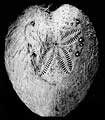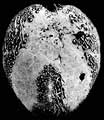The Echinoid Directory
Gymnopatagus Doderlein, 1901, p. 22
| Diagnostic Features |
|
|---|---|
| Distribution | Recent; Indo-West Pacific. |
| Name gender | masculine |
| Type | Gymnopatagus valdiviae, Doderlein, 1901, p. 23, by original designation. |
| Species Included |
|
| Classification and/or Status |
|
| Remarks |
|

